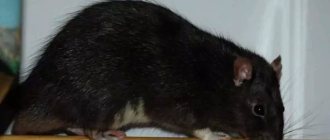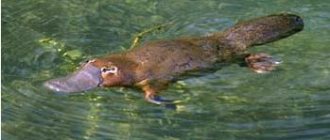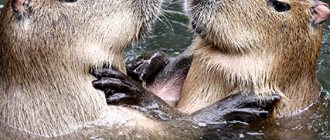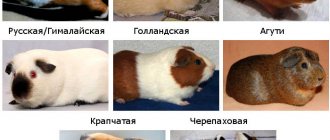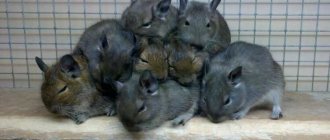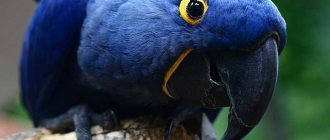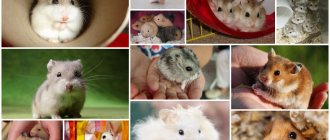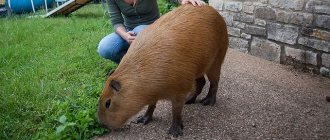The Hamyakov family is about three hundred species of different rodents. It includes not only well-known domestic animals, but also little-known wild animals. These include the Gray hamster - a rodent from the genus Gray hamsters. The habitat is wide - from Europe through Russia, Asia, Mongolia to the Western border of China. Found in Iraq, Iran, Afghanistan, India. Loves arid steppe and desert areas, avoids forests and humid climates. Very often, the gray hamster builds its home in gardens and vegetable gardens, and does not disdain agricultural land.
Appearance
The body length of the animal reaches 10-13 cm, the tail is 4 cm. Weight does not exceed 300 grams. It has small round ears protruding from the fur, an oblong muzzle, and a sharp nose. The eyes are small, black, shiny, and resemble beads. The color of the fur is gray on the sides, there is a dark gray stripe along the back, the abdomen and paws are almost white. Sometimes in nature there are individuals with red patches on their fur. The color of the rodent performs a protective function, because these small animals have many enemies and are completely unable to fight back. Very often, due to their external similarity, the hamster is confused with a field mouse. Their main difference is that the hamster has practically no tail, and its short legs are covered with thick gray hair, and the animal has large cheek pouches.
How to determine the breed of a hamster: algorithm
You need to rely on several points. These are: body length and color.
- Up to 5 cm, white belly and beige-brown back - Roborovsky's hamster.
- Up to 10 cm, with a predominance of gray color, with a black stripe on the back - jungarik.
- About 15 cm and a small tail, golden, uniform in color - Syrian hamster.
- Within 14-15 cm, the abdomen with legs is white, and the back is dark, then this is a Campbell's hamster.
These are the most common breeds to keep at home. If you need to determine the breed of small hamsters, then you should look at their parents, if possible, or focus on color.
Lifestyle
As a rule, he leads a sedentary, solitary lifestyle. The growth of agricultural land led to the fact that the animal gradually began to move closer to humans. The rodent does not like to build its own home; it prefers to move into burrows abandoned by other relatives or mice. It also happens that a gray hamster kills and then gradually eats the owner of the home, if he is smaller. It begins to dig a hole only if there is nothing to choose from. It has a small depth, about 40 or 50 cm, is divided into compartments, and contains several exits. The animal is very economical and picky; each room in its home has its own purpose: for sleeping, storing supplies, a latrine.
This is a gloomy animal, it is most active at night: it is engaged in construction, hunting, searching for food, and storing supplies for the winter. He does not like to go far from his habitat; if this happens, then, having an excellent sense of smell, he easily finds his way home. In winter, it falls into a short hibernation and periodically wakes up to nourish its body. The sleep period lasts about 5 – 6 months, the duration depends on weather conditions.
In nature, an animal can live up to 4-5 years, but this does not happen often, because it has too many enemies: foxes, kites, falcons, owls.
Conditions of detention
Gray hamsters can also be kept at home. To do this, you will need a small cage or aquarium (40/30/30 cm). These animals live well alone, so it is better to keep one or two animals of different sexes in one cage. Individuals of the same sex can conflict.
Sawdust, scraps of paper or hay would be good bedding for animals. The air temperature in the room should be 20–22 degrees. At low temperatures, hamsters can hibernate.
Often kept as pets or laboratory animals.
Pets lead an active lifestyle, so when keeping a house, they need to put a ladder and a special wheel for rodents in their cage. And be careful when opening the door, as pets may jump out.
A box with a hole for entry is suitable for arranging a nest. There the pets will be able to rest and breed. For nesting, they need to be offered pieces of fabric, cotton wool and paper.
Hamsters instinctively store food, even under established feeding patterns. Therefore, the cage needs to be regularly cleaned of perishable supplies. For example, pieces of fresh vegetables or fruits can harm your pet's health. But you can leave the grain and seeds, as they are stored for a long time, and the animal will be calmer.
Female hamsters can give birth to 2 or 3 offspring during the warm season. At one time they give birth to up to 8 cubs. Pregnancy lasts two decades. Once born, hamsters reach sexual maturity after 2–3 months, and manage to give birth to the next generation without waiting for the end of the year.
Features of behavior
The gray hamster has poor eyesight, but excellent hearing, and navigates in space by smell. It has a mild character and shows aggression only towards mice, gophers or its relatives. In case of danger, it always runs away, since its small size does not give it the opportunity to resist a large predator. He tries not to contact people, although he settles near his homes. Due to its nocturnal lifestyle, it is almost impossible to see.
It is distinguished by great cleanliness: the toilet in the hole is made separately from the main place of residence and is cleaned regularly. Takes care of the fur, cleaning it with its hind paws.
Lifestyle of Djungarian hamsters
Adult Djungarians prefer to live alone. They are characterized by territorial division.
Hamsters' burrows are spacious, up to 1 m deep, with many branches and chambers. Separate rooms are equipped for sleeping, storing supplies, and toilets.
Hamsters sleep during the day and forage for food at dusk and at night.
The basis of the diet is:
- seeds, grains, leaves and roots of plants;
- small insects and worms;
- young shoots, berries and vegetables.
A hamster can walk several kilometers in search of food, and stores about 20 kg of food for the winter. Djungarians carry food in subcutaneous bags on the sides of the body.
Adult dwarfs live alone.
This species of the hamster family does not hibernate. In winter, the coat color becomes lighter and blends into the snowy landscape. By cold weather, the hamster's body acquires subcutaneous fat.
If the cold continues for a long time down to -10 °C or the animal experiences stress, then it falls into torpor, a state close to death when the body temperature drops to +20 °C. This is how hamsters minimize energy expenditure and survive.
Nutrition
The main type of food for a rodent is grain crops: barley, millet, oats, wheat. Eats some types of legumes: beans, peas. Closer to autumn, he feasts on melons and their seeds: melons, watermelons, pumpkin, zucchini. Having climbed into the garden, it eats beets, carrots, sunflower seeds, and corn. Loves fruits and berries. Unlike other wild rodents, the gray hamster does not eat perennial grasses grown in pastures for livestock. In addition to plant foods, its diet includes mollusks, worms, crustaceans, small mice, beetles and ants.
Gray animals are very economical; during the summer they are able to store an amount of food several times greater than their own weight.
Gray hamster
Status. Rare, sometimes common species.
Spreading. Distributed in Russia in the central and southern regions of the European part, in the southern Urals. In the Saratov region it is found both in the right bank and in the Trans-Volga parts. In the adjacent Penza region, habitat was recorded only in five southern regions. Within the Saratov Right Bank, bone remains of gray hamsters were noted in pellets of birds of prey collected in Balashovsky, Ekaterinovsky, Saratovsky, Krasnoarmeysky, Rtishchevsky, Petrovsky, Lysogorsky, Romanovsky, Khvalynsky, Bazarno-Karabulaksky, Voskresensky and Tatishchevsky districts. In 1970-1995. for the Volga region, the number of hamster sightings was significantly smaller. For example, a rodent was caught by predators in the Krasnopartisan region at ur. New Village (1995), in addition, V.S. Zaletaev and L.I. Stefankov (1997) discovered these animals in the steppe-formed left-bank floodplain below the Balakovo hydroelectric complex. In 1999-2001 was caught on the steppe-formed terraces of the river. B. Irgiz in the Pugachevsky district (Belyachenko et al., 2002). It apparently penetrated into the northern regions of the Volga region from the right bank of the river. Volga (Shchepotyev, 1970). Number. Accurate accounting data from most districts of the Saratov region is not available. The average long-term relative abundance for individual areas is: in the Lysogorsk region 2.1 individuals/100 trap-days, Krasnoarmeysky - 0.3, Saratov - 1.1, Tatishchevsky - 0.9, Balakovsky - 0.1, Krasnopartizansky - 0.3, Krasnokutsky - 0.1. The largest number of gray hamsters in the Saratov Right Bank is observed in agricultural crops and young fallow lands, where their incidence in traps reaches 4-6% (Tsvetkova et al., 2008).
Short description. The region is home to the subspecies C. t. phaeus, which is relatively light-colored compared to other taxa. Body length reaches 122 mm, tail - 35 mm. The color of the back is one color - from dark to light ash, with a fawn tint; the tail is one color. Wide black ends of the guard hairs form dark spots along the middle part of the back in its posterior section. The soles are covered with hairs to the point of calluses. The ears are without a light edge, which distinguishes this rodent from other species of the genus. The skull is characterized by a specific structure of the anterior ends of the parietal bones, which do not form forward-directed processes, and the auditory capsules are slightly flattened below. There are 2n = 22 chromosomes in a karyotype.
Habitat. The gray hamster is eurytopic. In the north of the Volga region it is found in areas of preserved steppes in ravines, in agrocenoses, where it prefers fields of sunflower and millet (Tsvetkova et al., 2005), along the outskirts of populated areas. In the right-bank areas, in places it is numerous in forest belts and thickets of bushes. In winter, it often moves into outbuildings of rural farmsteads. Actually avoids steppe biotopes. To construct burrows, hamsters use steppe areas with feather grass, fescue, fescue, and field wormwood. Burrows are located near feeding areas, usually agricultural land.
Features of biology. Leads a predominantly solitary, twilight lifestyle. It digs burrows independently, most often with two exits, simply constructed, with one chamber and blind holes for storing seed reserves (up to 800 g). It can also settle in natural shelters. In autumn it is found with other rodents in sweeps and haystacks. Reproduction is year-round, bringing up to 5-6 litters per year, the number of cubs varies depending on breeding conditions - from 3 to 10, more often - 5-7. At the age of three weeks, young animals begin to disperse. In winter, the hamster does not go into real hibernation, but its activity decreases sharply. In the Saratov region, in the spring it feeds mainly on green parts of plants, and from mid-summer on seeds of wild and cultivated forms. Of the wild plants, the most important in nutrition are sweet clover, wheatgrass, bindweed, bromegrass and other cereals. In the burrows they found reserves of buckwheat, cereals, peas, pumpkin seeds, watermelon, sunflower seeds, and fruit tree seeds. It constantly consumes small quantities of animal food - mollusks, arthropods and their larvae. It causes harm in homes, warehouses, fields of grain and root crops. However, the harmful activity is relatively small, since the high numbers of this rodent, characteristic of mice and voles, are not observed. It is a natural carrier of pathogens of Q fever, plague and tularemia infections and some other diseases.
Reproduction
Hamsters of this species are fertile. During the summer, females can give birth to up to two litters. The gestation period lasts 20-25 days. One litter can have about 10 cubs. Babies are born blind, deaf and bald. But by the end of the second week of life they can feed on their own. Mothers take care of small hamsters for twenty days, then the young go into adulthood. At the same time, puberty begins, so by the end of the season, young females can bring their own litter.
Despite their good fertility, rodents are listed in the Red Book as an endangered species. This is due to several factors:
- Changing natural landscapes. There are no areas where people are not engaged in economic activities. Constant cohabitation with people leads to the displacement of rodents from their usual habitat.
- Poisoning from chemical fertilizers. Agricultural fields are constantly treated with nitrates and pesticides, which leads to intoxication of the animals’ bodies and their slow and certain extinction.
- A large number of predators. As a rule, a large number of rodents are destroyed by their enemies during puberty. Stupid young animals are hunted by rats, herons, ferrets, and badgers.
Hamsters of this species do not cause damage to agriculture, unlike other wild rodents. They are cute and harmless animals of the steppes and semi-deserts.
Spreading
Distributed from Eastern Europe through Russia and central Asia to Mongolia and to western China. The southern edge of its range passes through Israel, Jordan, Iraq, Iran, Afghanistan, Pakistan and northern India. At first he lived in dry meadows, steppes and semi-deserts. Now it also lives on farmland and in gardens, and sometimes even in houses. Prefers arid areas with relatively sparse vegetation, avoids forests and wet habitats.
In Russia, the gray hamster lives in the European part north to the Moscow region and the mouth of the Kama, in the Caucasus and the south of Western Siberia to the foothills of Altai in the east, in forest-steppes, steppes and populated areas. Brought to Moscow, where it took root in some areas of the city (for example, near the Belorussky railway station). It adheres to dry places, desert depressions, rocks and screes in the mountains, steppe ravines, wastelands and pastures.
